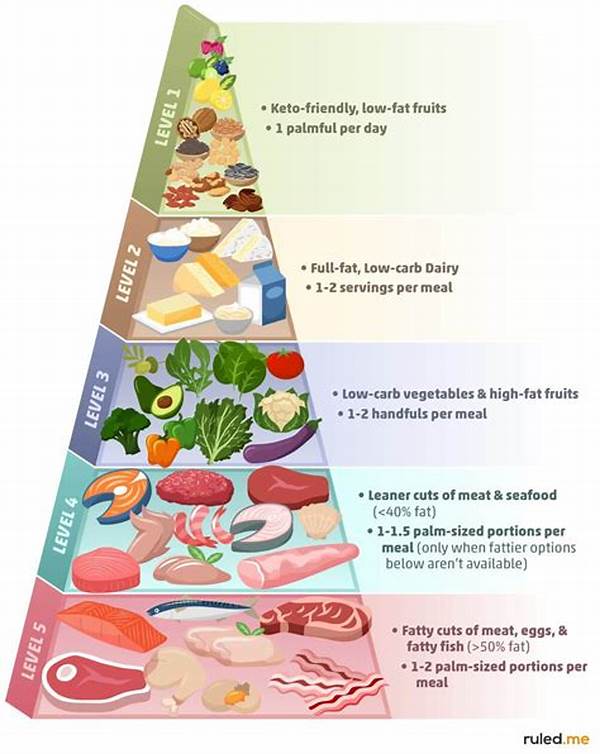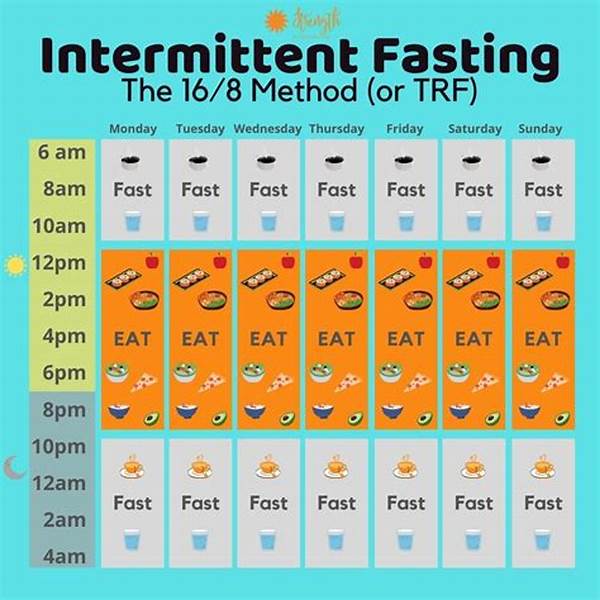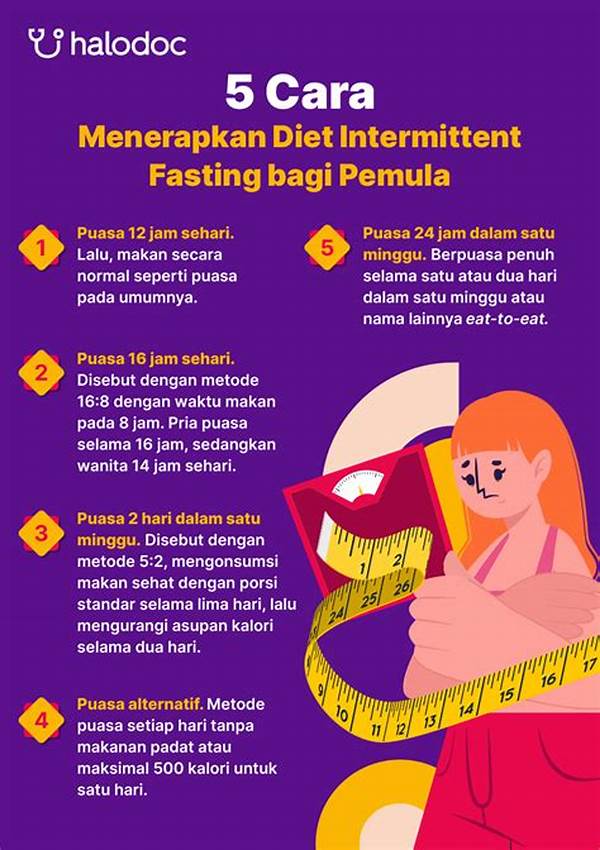Monitoring Your Body During IF: A Beginner’s Guide
Ever thought about diving into the world of Intermittent Fasting (IF) and wondered how to monitor your body effectively during this new journey? Welcome to “Monitoring Your Body During IF: A Beginner’s Guide.” This guide is not just another mundane manual; it’s your exclusive VIP pass into understanding the nuances of your body’s response to fasting. Whether you’re aiming for weight loss, improved concentration, or a healthier lifestyle, IF can be a transformative experience. However, diving into IF without understanding the signals and changes in your body can be akin to sailing a ship without a compass.
Read More : Stop Sabotaging: How Emotional Eating Destroys Your If Goals (and How To Stop It)!
In this bustling world of health trends and quick-fix diets, IF stands out as a scientifically-backed regimen that promises significant benefits. Data suggests about 24% of adults in the United States have tried some form of IF, and the numbers keep growing. But with every nutritional trend, the devil is in the details. Monitoring your body’s reactions and adaptations is crucial. From understanding the initial hunger pangs to identifying signs of increased energy, grasping these changes can prevent pitfalls like fatigue, dehydration, and nutrient deficiency.
Imagine this: You’ve begun IF, and a week in, you’re puzzled by your perpetual tiredness and lack of focus. A friend suggests it might be the lack of carbs. Another insists it’s dehydration. Who’s right? This beginner’s guide will ensure you don’t have to rely on guesswork. By spotlighting key parameters – like hydration levels, energy fluctuations, and nutrient intake – and equipping you with practical tools and real-life testimonials, you’ll gain the confidence to keep any worries at bay.
Ultimately, monitoring your body during IF ensures a smoother ride, maximizing benefits while minimizing discomfort. So, let’s embark on this educational, engaging, and slightly humorous journey together. After all, who said health guides should be boring? Turn the page, and let’s decode the art and science of “Monitoring Your Body During IF: A Beginner’s Guide.”
Understanding Your Body’s Signals During IF
1. How to Set Realistic Goals for Your IF Journey
2. Identifying Signs of Dehydration and Malnutrition in IF
3. Tracking Energy Levels and Sleep Patterns During IF
4. Recognizing Healthy vs. Unhealthy Weight Changes
5. Using Technology for Monitoring: Apps and Wearables
6. Personal Experiences: Testimonials from IF Practitioners
7. The Role of Healthcare Professionals in Your IF Journey
8. Understanding Psychological Changes During IF
—
Getting Started with Monitoring Your Body During IF
Embarking on a journey into the world of Intermittent Fasting (IF) is not just a trend but an exploration into how your body responds to changes. But how do you ensure you’re reaping the benefits without falling into pitfalls? Enter “Monitoring Your Body During IF: A Beginner’s Guide.” This guide serves as your navigational map, translating the complex signals your body sends during IF into a language you can understand and act upon. Fasting is a fantastic tool, scientifically proven to help with weight management, metabolic health, and cognitive functioning, but it comes with its own set of challenges that require diligent monitoring.
The first step in any IF regime is understanding your body’s baseline – your starting point. Before diving into IF, spend a week jotting down your energy levels, mood, sleep patterns, and food intake to establish what normal looks like for you. Knowledge is power, and this personal data serves as a benchmark to measure progress and identify any adverse reactions.
The transition phase into IF is where most of the magic—and confusion—happens. As your body adjusts to new eating windows, you’ll likely experience shifts in energy, mood, and concentration. Muscle yourself through initial hunger pangs by staying hydrated and keeping busy. Remember, feeling a little off is normal initially, but prolonged discomfort signals something is amiss. Monitoring your body during IF means knowing when to soldier on and when to adjust.
Once you’re in the groove of IF, continuous self-monitoring helps fine-tune and optimize the process. Are you shedding weight at the right pace for your body type? Is sleep quality improving, staying constant, or worsening? A great way to objectively monitor these changes is by leveraging technology—apps like Zero and fasting wearables provide quantitative data that’s easy to track and interpret over time.
As you progress, sharing experiences with community forums or IF groups can offer emotional support and additional insights. Your journey is uniquely yours, but knowing others’ trials and triumphs lends perspective and sometimes solutions to matters you hadn’t considered. It’s like having a cheering squad right in your pocket, with collective experience adding depth to the understanding of your own bodily responses.
Finally, always loop in healthcare professionals in your IF journey. Whether it’s your general practitioner or a nutritionist, these experts can offer clarity on puzzling body signals. Perhaps you’re suspecting nutrient deficiencies or unusual weight changes; having professional input ensures you’re not going it alone, thus multiplying your chances of success.
The Science Behind Monitoring During IF
Tools and Techniques for Effective Monitoring
Tracking progress during intermittent fasting can be likened to peeling an onion—every layer uncovers something new. For beginners, there’s a vast array of monitoring tools available that cater to virtually every need. From simple, handwritten journals documenting daily food intake and mood states to sophisticated apps analyzing ketone levels and metabolic rates, the options are exhaustive. Opting for a smartphone app that’s user-friendly provides instantaneous insights and can increase adherence by highlighting daily or weekly progress.
If you’re analytically inclined, fitness trackers and smartwatches offer real-time data on heart rates, step counts, and sleep patterns. Such metrics, while telling of physical fitness, are equally indicative of how your body copes with fasting. A notable feature is the ability to set hourly reminders, ensuring you stay hydrated and mentally check in with yourself—something incredibly potent for those busy juggling life and IF in tandem.
Incorporating traditional body measurements like waist circumference and body fat percentage is equally important. Such measurements offer a more stable indication of progress compared to weight alone, which can fluctuate for myriad reasons. It’s a holistic way of monitoring your body during IF, one that’s less likely to mislead than the dial of a step-on scale.
—
Top Topics Related to Monitoring Your Body During IF: A Beginner’s Guide
A Deep Dive into Monitoring During IF
When you decide to embark on the intermittent fasting (IF) journey, one key component that often gets overlooked is how to effectively monitor the body during the process. The relevance of this can’t be overstated. Without proper monitoring, fasting can lead to pitfalls that could deter you from succeeding.
Initially, you’ll feel an array of reactions from your body as it adjusts to new dietary patterns—headaches, hunger, even increased irritability. While these are mostly harmless, being able to identify them provides solace. Do they last an hour or two, or are they enduring throughout the day? Here, keeping a diary comes into play. Make notes about your energy levels, emotions, and eating patterns so you can adjust accordingly.
But how exactly do you start monitoring your body during IF? A strategic start is to assess your current lifestyle. If you’re a person that relies heavily on increased fuel in the mornings, perhaps consider an IF schedule that allows for a hearty breakfast before your fasting period. Tailor the regimen to suit your existing lifestyle for an optimal transition.
Technology favors the brave, the new adventurers into fasting. With apps that provide features from fasting timers to calorie counters, you can make monitoring a seamless experience. Investing in a fitness tracker is also a game-changer. It helps you record physical activity, ensuring you’re maintaining an exercise regimen that complements your fasting schedule for maximum results.
However, technology shouldn’t bypass insights from healthcare professionals. Discussing competencies in fasting with your doctor provides a second set of eyes, offering advice based on your medical history and possibly suggesting complementary approaches. Feeding off professional insights mitigates erroneous decisions and ensures success on your IF treadmill.
Assessing Physical Changes in IF
Building a Support System
Engaging with communities is an often missed, yet vital step in monitoring your body during IF. Whether it’s online forums or local meeting groups, learning from those who’ve walked the path is immensely helpful. Participant experiences can flag potential issues like fatigue or nutrient deprivation. While every body is different, collective intelligence gives a richer understanding and preparation.
Creating accountability through brief weekly check-ins with a fasting buddy can streamline your monitoring process. The shared documentation offers unique perspectives while evoking a sense of challenge, and even camaraderie, as you navigate this new lifestyle. It’s one thing to track on your own, but having a partner can propel you towards your IF goals with renewed vigor.
Finally, understanding that monitoring in IF is multifaceted is crucial. It’s an union of technology, medical advice, emotional well-being, and community support—all synchronizing to transform your IF journey into a well-rounded, fulfilling venture.














